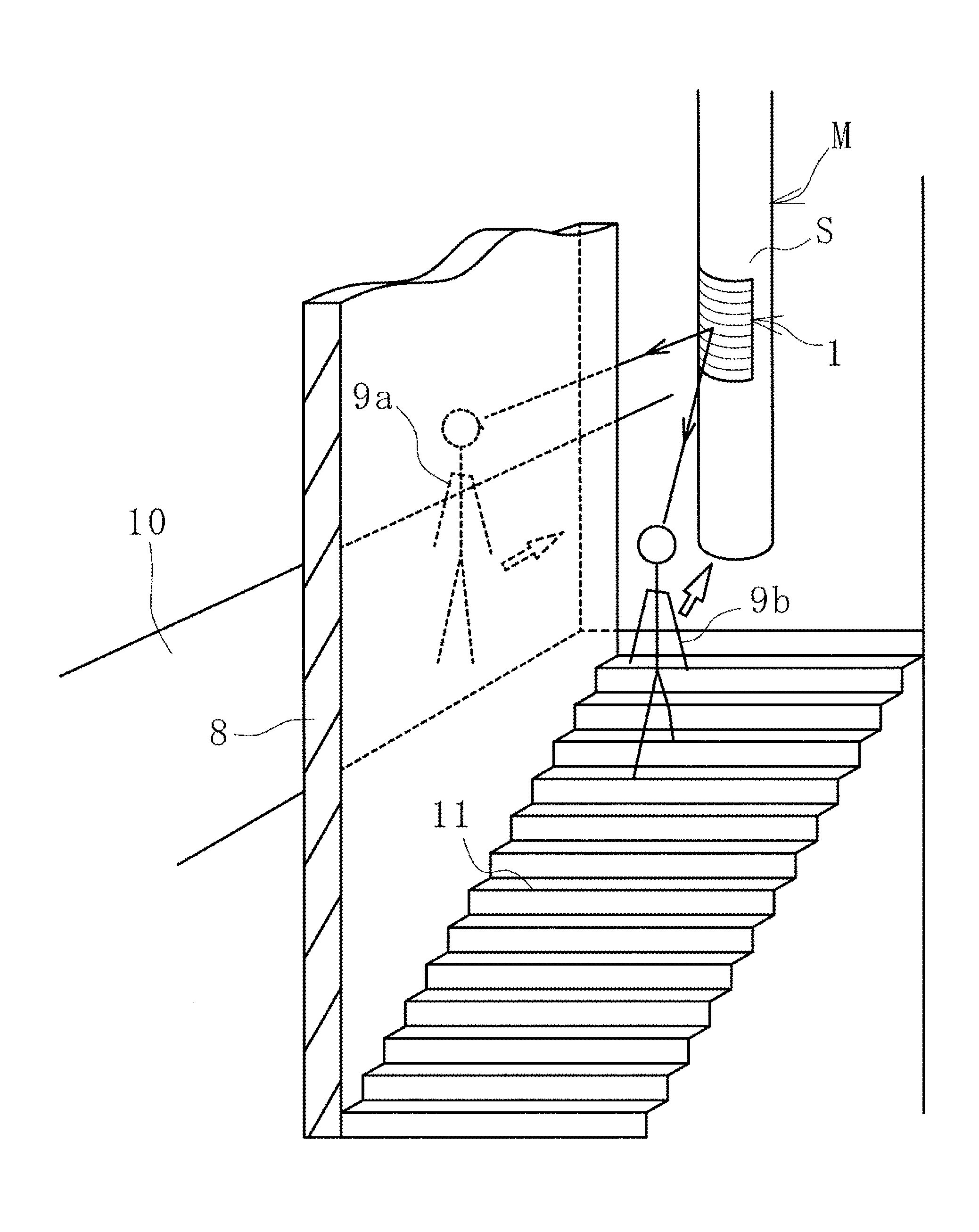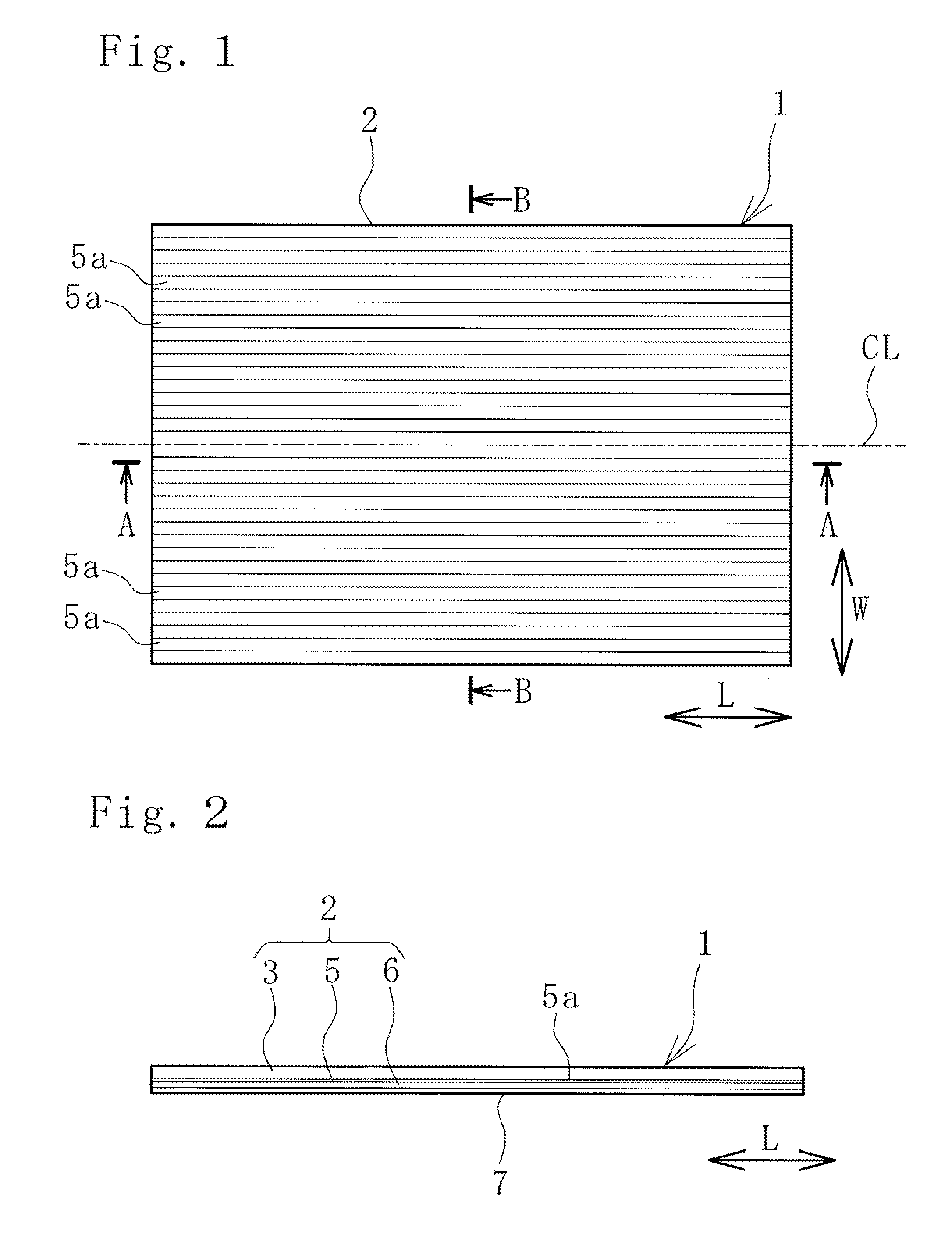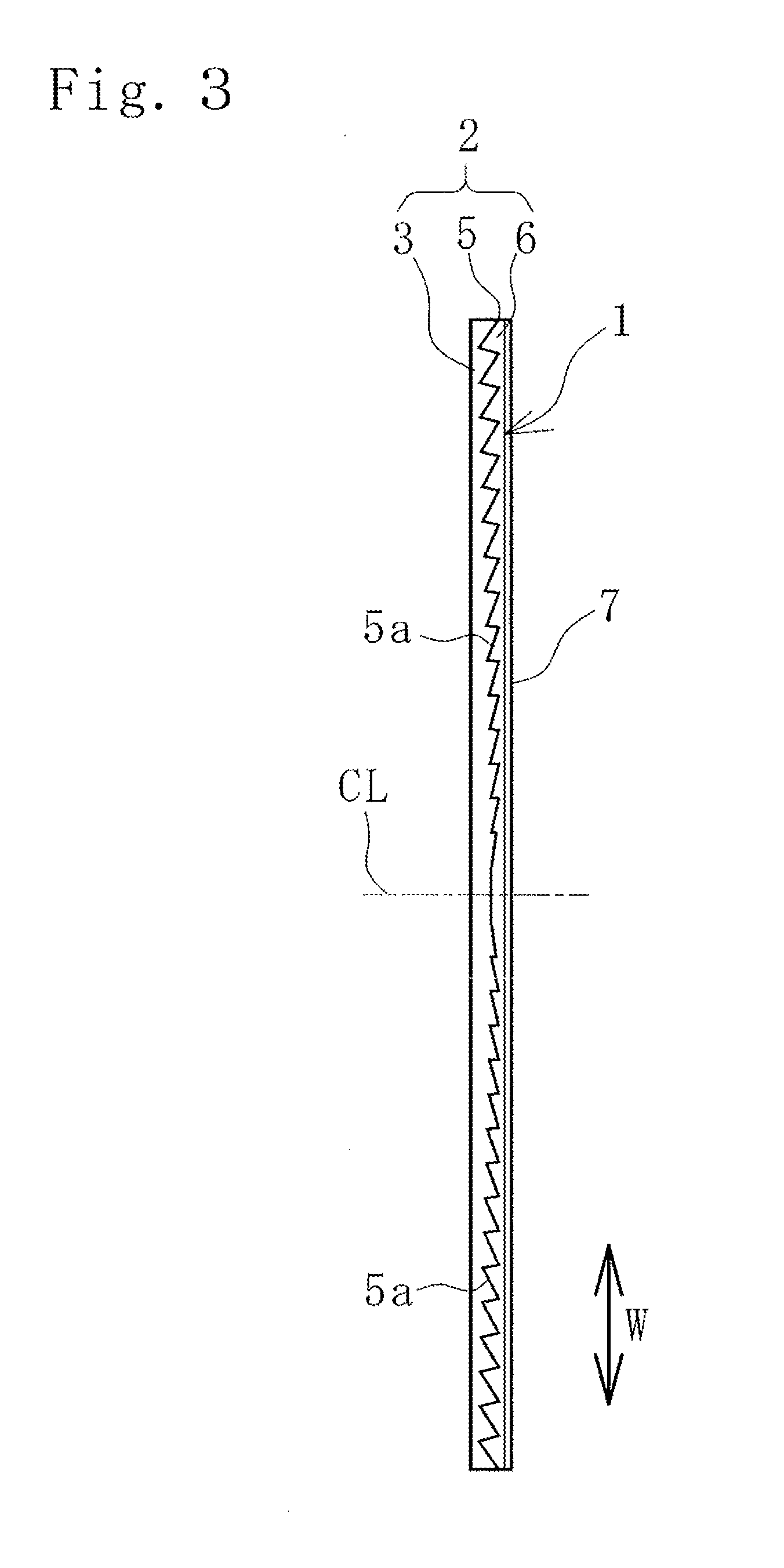Mirror for checking blind spot
a mirror and blind spot technology, applied in the direction of mirrors, mountings, instruments, etc., can solve the problems of low eye level, interference with traffic, and inclination to miss the mirror, so as to facilitate recognition of the image, improve safety, and facilitate grasping
- Summary
- Abstract
- Description
- Claims
- Application Information
AI Technical Summary
Benefits of technology
Problems solved by technology
Method used
Image
Examples
Embodiment Construction
[0021]A mirror for checking a blind spot of the present invention is described below based on embodiments shown in the drawings.
[0022]As illustrated in FIGS. 1 to 4, a mirror 1 for checking a blind spot (hereafter, referred to as mirror 1) of the present invention includes a sheet 2 formed by laminating a transparent resin plate 3, a reflective layer 5, and a coating layer 6 to one another. An attachment member 7 for attaching the mirror 1 to a curved surface S of a structure M is provided on a back surface of the sheet 2. Adhering means such as a double-sided adhesive tape and adhesive can be given as examples of the attachment member 7. Screws may be used instead of such adhering means. Alternatively, the adhering means and the screws can be used together. In a case where the attachment member 7 is the adhering means, the adhering means may be provided over the entire back surface of the sheet 2 or only in a periphery thereof. In the case of the screws, the sheet 2 may be screwed ...
PUM
 Login to View More
Login to View More Abstract
Description
Claims
Application Information
 Login to View More
Login to View More - R&D
- Intellectual Property
- Life Sciences
- Materials
- Tech Scout
- Unparalleled Data Quality
- Higher Quality Content
- 60% Fewer Hallucinations
Browse by: Latest US Patents, China's latest patents, Technical Efficacy Thesaurus, Application Domain, Technology Topic, Popular Technical Reports.
© 2025 PatSnap. All rights reserved.Legal|Privacy policy|Modern Slavery Act Transparency Statement|Sitemap|About US| Contact US: help@patsnap.com



